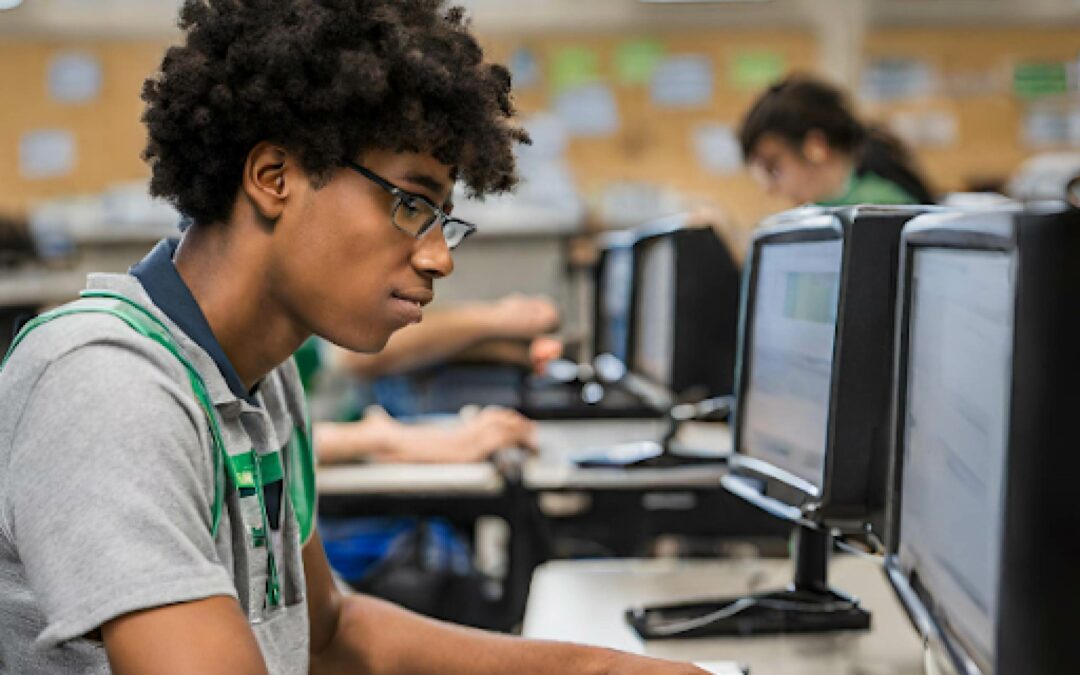The 21st century classroom is a dynamic and ever-changing environment that requires effective and up-to-date pedagogy to ensure that students are engaged, motivated, and successful. In this article, we will explore the latest research and best practices in pedagogy, with a focus on Texas school districts. We will examine the importance of student-centered learning, the use of technology, and the role of teachers in creating a positive and effective learning environment.
Student-Centered Learning
One of the most important trends in pedagogy in the 21st century is the shift towards student-centered learning. This approach emphasizes the importance of student engagement, motivation, and ownership of the learning process. In a student-centered classroom, the teacher acts as a facilitator, guiding students through the learning process and providing support and feedback as needed.
Research has shown that student-centered learning is highly effective in improving student outcomes. A study conducted by the National Center for Education Statistics found that students who were taught using student-centered methods had higher achievement scores than those who were taught using traditional methods (National Center for Education Statistics, 2016).
Texas school districts have been at the forefront of the student-centered learning movement. The Texas Education Agency (TEA) has developed a number of initiatives to promote student-centered learning, including the Texas High Performance Schools Consortium and the Texas Education Agency’s Student-Centered Learning Initiative.
The Texas High Performance Schools Consortium is a group of school districts that have come together to develop innovative approaches to teaching and learning. The consortium focuses on student-centered learning, personalized learning, and the use of technology to enhance instruction. The consortium has been highly successful in improving student outcomes, with participating districts reporting higher graduation rates and improved student achievement (Texas Education Agency, 2019).
The Texas Education Agency’s Student-Centered Learning Initiative is another important initiative that promotes student-centered learning in Texas schools. The initiative provides resources and support to teachers and administrators to help them implement student-centered practices in their classrooms. The initiative has been highly successful, with participating schools reporting improved student engagement, motivation, and achievement (Texas Education Agency, 2019).
Technology in the Classroom
Another important trend in pedagogy in the 21st century is the use of technology in the classroom. Technology has the potential to transform the learning experience, providing students with access to a wealth of information and resources, and enabling them to collaborate and communicate with others in new and innovative ways.
Research has shown that technology can be highly effective in improving student outcomes. A study conducted by the National Bureau of Economic Research found that students who were given access to computers and the internet at home had higher test scores and were more likely to graduate from high school (Fairlie & Robinson, 2013).
Texas school districts have been at the forefront of the technology in the classroom movement. The Texas Education Agency has developed a number of initiatives to promote the use of technology in the classroom, including the Texas Education Agency’s Technology Applications Curriculum Standards (TEKS) and the Texas Education Agency’s Technology Integration Matrix.
The TEKS are a set of standards that outline the skills and knowledge that students should have in order to use technology effectively. The TEKS cover a wide range of topics, including digital citizenship, digital communication, and digital creativity. The TEKS have been highly successful in promoting the use of technology in Texas schools, with participating districts reporting improved student engagement and achievement (Texas Education Agency, 2019).
The Technology Integration Matrix is another important initiative that promotes the use of technology in the classroom. The matrix provides teachers with a framework for integrating technology into their instruction, with a focus on student-centered learning and the use of technology to enhance instruction. The matrix has been highly successful, with participating schools reporting improved student engagement, motivation, and achievement (Texas Education Agency, 2019).
The Role of Teachers
While student-centered learning and technology are important trends in pedagogy in the 21st century, the role of teachers remains critical. Teachers play a key role in creating a positive and effective learning environment, and in guiding students through the learning process.
Research has shown that effective teachers have a significant impact on student outcomes. A study conducted by the National Bureau of Economic Research found that students who were taught by highly effective teachers had higher test scores and were more likely to graduate from high school (Chetty, Friedman, & Rockoff, 2014).
Texas school districts have recognized the importance of effective teachers, and have developed a number of initiatives to support teacher development and growth. The Texas Education Agency’s Teacher Incentive Allotment is one such initiative. The Teacher Incentive Allotment provides funding to districts that implement performance-based compensation systems for teachers. The goal of the initiative is to attract and retain highly effective teachers, and to improve student outcomes (Texas Education Agency, 2019).
All-in-all, effective and up-to-date pedagogy is critical in the 21st century classroom. Student-centered learning, the use of technology, and the role of teachers are all important trends in pedagogy that have been highly successful in improving student outcomes. Texas school districts have been at the forefront of these trends, developing innovative initiatives and programs to promote effective pedagogy and improve student outcomes. By continuing to prioritize effective pedagogy, Texas schools can ensure that students are engaged, motivated, and successful in the 21st century classroom.
References
Chetty, R., Friedman, J. N., & Rockoff, J. E. (2014). Measuring the impacts of teachers II: Teacher value-added and student outcomes in adulthood. American Economic Review, 104(9), 2633-2679.
Fairlie, R. W., & Robinson, J. C. (2013). Experimental evidence on the effects of home computers on academic achievement among schoolchildren. American Economic Journal: Applied Economics, 5(3), 211-240.
National Center for Education Statistics. (2016). Student-centered learning: A review and analysis of the literature. Retrieved from https://nces.ed.gov/pubs2016/2016166.pdf
Texas Education Agency. (2019). Texas High Performance Schools Consortium. Retrieved from https://tea.texas.gov/academics/college-career-and-military-prep/texas-high-performance-schools-consortium
Texas Education Agency. (2019). Texas Education Agency’s Student-Centered Learning Initiative. Retrieved from https://tea.texas.gov/student-centered-learning-initiative
Texas Education Agency. (2019). Texas Education Agency’s Technology Applications Curriculum Standards (TEKS). Retrieved from https://tea.texas.gov/academics/technology-applications-curriculum-standards-teks
Texas Education Agency. (2019). Texas Education Agency’s Technology Integration Matrix. Retrieved from https://tea.texas.gov/technology-integration





